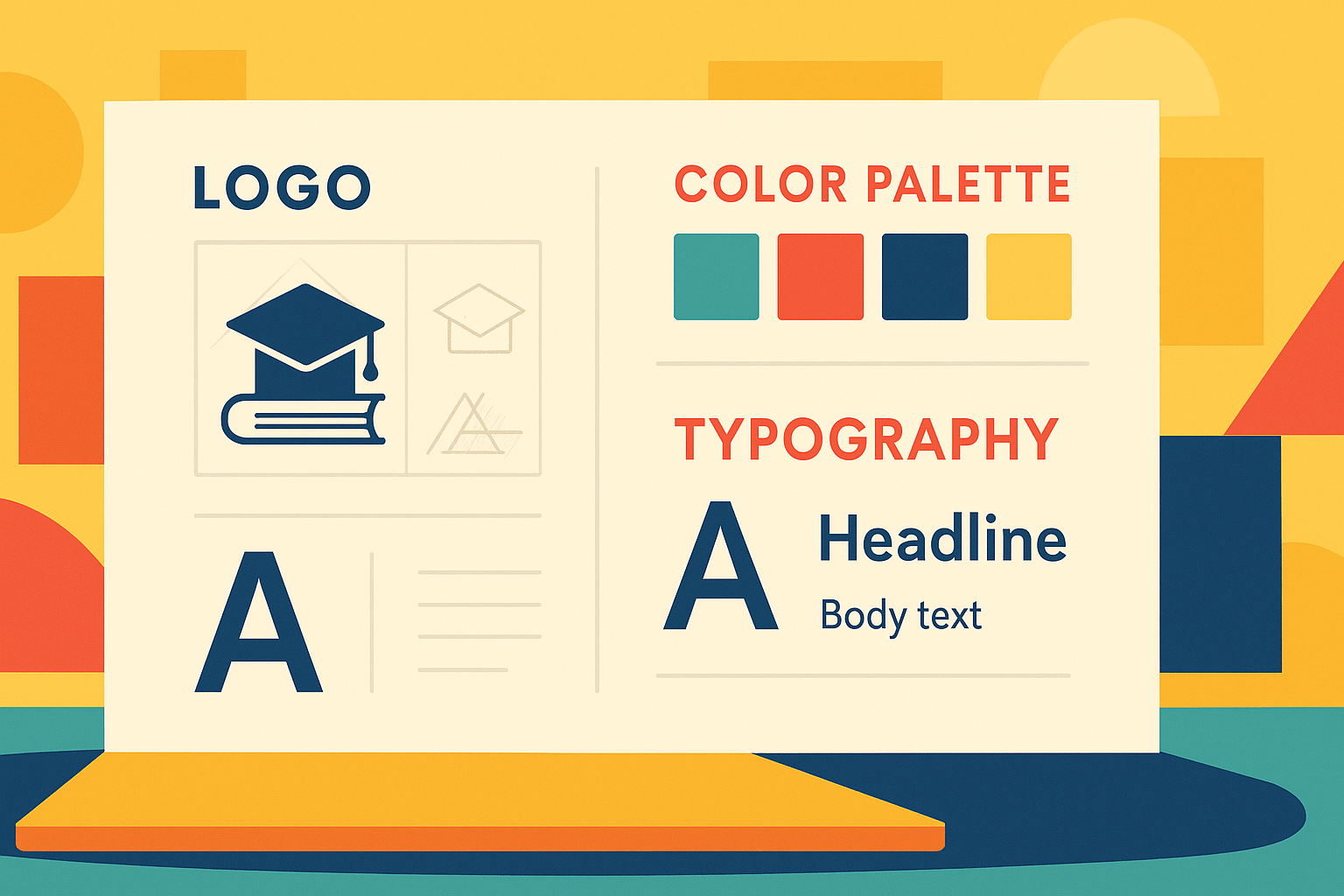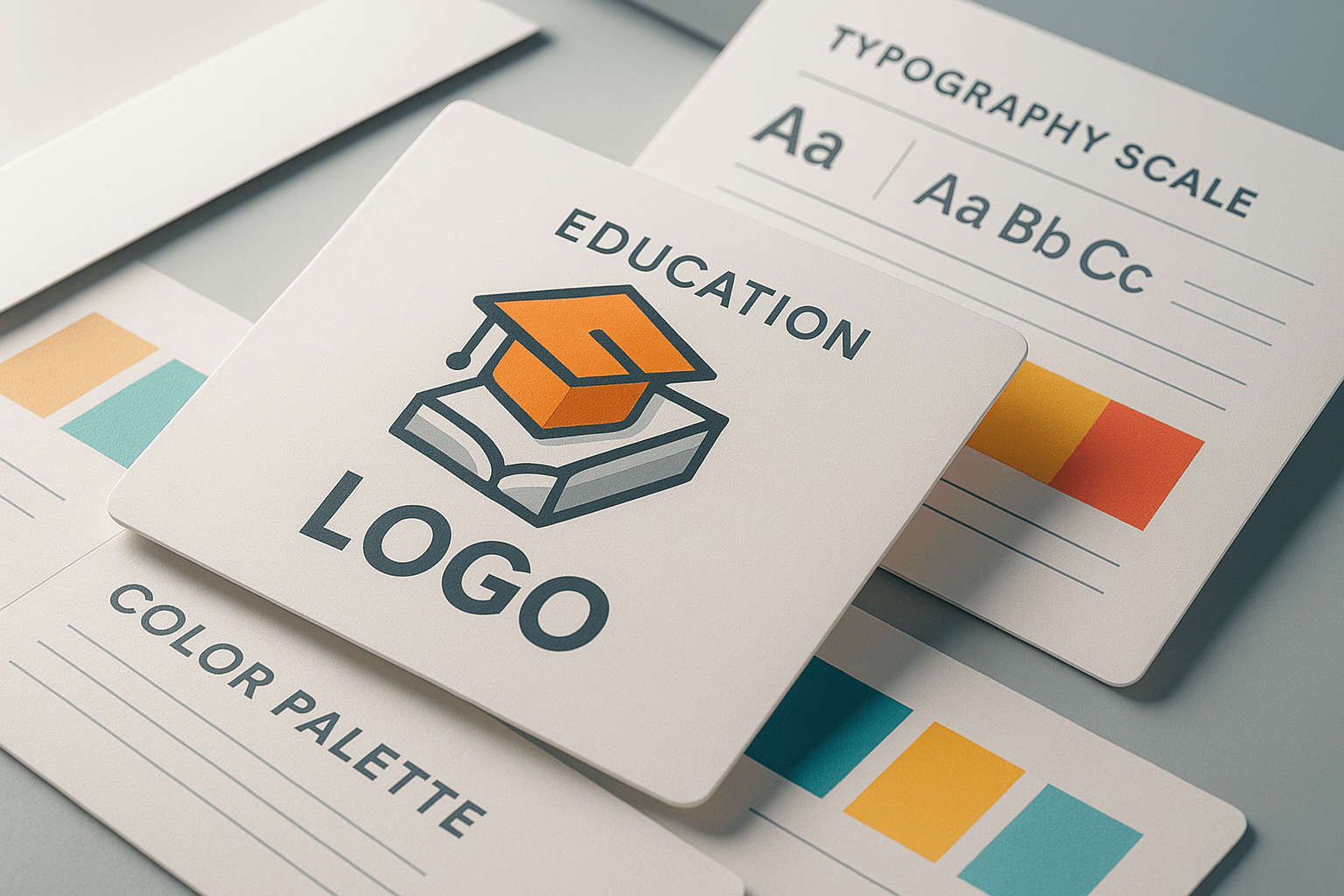Branding Services for Education Providers — Automate Repetitive Tasks
by Design Delulu Editorial · September 13, 2025

In today's competitive educational landscape, establishing a strong brand identity isn't just a luxury—it's essential for survival and growth. Education providers, from private schools and universities to online learning platforms and tutoring services, face unique challenges in differentiating themselves while maintaining credibility and trust. Professional branding services offer a strategic solution to streamline operations, enhance visibility, and create lasting connections with students, parents, and stakeholders.
The education sector struggles with outdated visual identities, inconsistent messaging across platforms, and time-consuming manual processes that drain resources from core educational activities. Branding services specifically tailored for education providers address these pain points by creating cohesive visual systems, automated workflows, and strategic positioning that resonates with target audiences while reducing administrative overhead.

Why Education Providers Need Branding Services
Key Challenges They Face
Education providers encounter several critical branding challenges that impact their ability to attract and retain students:
- Trust and Credibility Issues: Parents and students make educational decisions based heavily on perceived quality and reputation. Outdated or inconsistent branding immediately signals unprofessionalism and can undermine confidence in educational quality.
- Market Differentiation: With increasing competition from traditional institutions, online platforms, and alternative education providers, standing out requires more than just quality curriculum—it demands a compelling brand story.
- Multi-Platform Consistency: Education providers must maintain presence across websites, social media, print materials, physical spaces, and digital learning platforms. Without professional branding guidelines, maintaining consistency becomes nearly impossible.
- Resource Allocation: Educational institutions often lack dedicated marketing teams, forcing administrators and educators to handle branding tasks that consume valuable time better spent on educational excellence.
- Student Acquisition Costs: Poor branding leads to inefficient marketing spend, as generic messaging fails to connect with ideal student demographics.
How Branding Services Solve These Problems
Professional branding services for education providers create systematic solutions that address each challenge:
- Establishing Authority: Strategic brand positioning communicates expertise, credentials, and educational philosophy clearly, building immediate trust with prospective families.
- Creating Memorable Differentiation: Unique visual identities and messaging strategies help education providers stand out in crowded markets while highlighting their specific strengths and specializations.
- Systematic Consistency: Comprehensive brand guidelines and templates ensure cohesive presentation across all touchpoints, from business cards to campus signage to mobile applications.
- Operational Efficiency: Automated design systems and template libraries reduce time spent on routine marketing tasks, allowing educators to focus on their core mission.
- Improved ROI: Targeted branding strategies increase conversion rates and reduce customer acquisition costs by attracting more qualified prospects.

Essential Features of Branding Services for Education Providers
Must-Have Tools, Design Elements, and Workflows
- Logo Systems and Visual Identity: Education-focused logo designs that work across digital and print applications, incorporating elements that convey learning, growth, and achievement while remaining timeless and professional.
- Color Psychology and Palettes: Strategic color selections that evoke trust, intelligence, and approachability while considering cultural sensitivities and accessibility requirements for diverse student populations.
- Typography Hierarchies: Readable font systems that work across age groups and learning needs, ensuring accessibility compliance while maintaining brand personality.
- Template Libraries: Standardized layouts for common educational materials including course catalogs, newsletters, certificates, presentation slides, and social media content.
- Photography and Illustration Guidelines: Visual standards for representing diverse student bodies, campus life, and educational activities that align with brand values.
- Digital Asset Management: Centralized systems for storing and accessing brand assets, ensuring team members always use current, approved materials.
Real-World Examples
Case Study - Private Elementary School: A struggling private school increased enrollment by 40% after implementing a cohesive branding strategy that repositioned them as a "nurturing environment for gifted learners" rather than generic private education.
Case Study - Online Learning Platform: An e-learning startup reduced customer acquisition costs by 60% through targeted branding that clearly communicated their unique teaching methodology and success metrics.
Case Study - Community College: A community college's rebrand focusing on career advancement and practical skills led to 25% higher retention rates and improved employer partnerships.

Common Mistakes to Avoid
Typical Pitfalls in Branding Services for Education Providers
- Generic Educational Imagery: Using stock photos of generic students with books creates no emotional connection and fails to represent the actual student experience or institutional personality.
- Overlooking Accessibility: Failing to consider color blindness, dyslexia, and other learning differences when designing brand elements can exclude potential students and violate accessibility standards.
- Inconsistent Tone Across Audiences: Using the same messaging for prospective students, current families, and faculty creates confusion and weakens brand impact.
- Neglecting Digital-First Design: Creating brand elements that work for print but fail in digital environments limits reach and effectiveness in today's online-focused education landscape.
- Copying Competitors: Mimicking successful institutions without considering unique value propositions results in bland, forgettable branding that fails to differentiate.
How to Do Better
- Authentic Representation: Use real photos of actual students, faculty, and facilities to create genuine connections and accurately represent the educational experience.
- Universal Design Principles: Implement accessibility standards from the beginning, ensuring all brand elements work for users with various abilities and learning styles.
- Audience-Specific Messaging: Develop distinct voice and tone guidelines for different stakeholder groups while maintaining overall brand consistency.
- Mobile-First Approach: Design all brand elements to work primarily on mobile devices, then adapt for larger screens and print applications.
- Value Proposition Clarity: Focus branding efforts on clearly communicating unique educational approaches, outcomes, and advantages rather than generic benefits.
SEO and Growth Best Practices
Optimization Tips Specific to Education Providers
- Local SEO Integration: Incorporate location-based keywords naturally into brand messaging, as most education decisions are geographically influenced.
- Program-Specific Landing Pages: Create branded content hubs for different educational programs, allowing for targeted SEO while maintaining brand consistency.
- Student Success Stories: Develop branded case study templates that showcase outcomes while incorporating relevant keywords and building trust.
- Content Marketing Alignment: Ensure all branded content addresses common parent and student questions, improving both SEO performance and brand authority.
- Review and Testimonial Integration: Create branded systems for collecting and displaying reviews that enhance both credibility and search engine visibility.
Leveraging Branding Services for Visibility and Results
- Social Proof Amplification: Strong branding makes testimonials and success stories more impactful, as consistent visual presentation increases perceived credibility.
- Referral Program Enhancement: Professional branding materials make referral programs more effective, as parents and students feel confident sharing polished, impressive materials.
- Partnership Opportunities: Cohesive branding opens doors to partnerships with other educational organizations, businesses, and community groups by demonstrating professionalism and stability.
- Media Coverage: Well-branded education providers are more likely to receive media attention and speaking opportunities, further enhancing visibility and authority.
- Alumni Engagement: Strong institutional branding creates emotional connections that lead to ongoing alumni support, word-of-mouth marketing, and donation opportunities.
The investment in professional branding services pays dividends through improved student acquisition, enhanced reputation, operational efficiency, and long-term institutional growth. Education providers who embrace strategic branding position themselves for sustainable success in an increasingly competitive market.
👉 Ready to improve your education providers with branding services? Explore Design Delulu's Branding Services